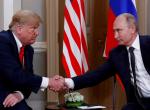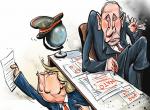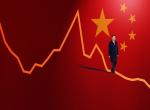Since Donald J. Trump’s start of second term as US president, his executive decisions have triggered disruptions that could fundamentally reshape the global order. To understand China’s potential to alter the balance of power, it is crucial to reassess its economic trajectory. The US-China rivalry is fundamentally geoeconomic and technological rather than military, necessitating a nuanced evaluation of China’s economic resilience, policy choices, and structural vulnerabilities. The “Peak China” narrative—predicting imminent economic decline—has gained traction, with concerns that stagnation could drive China toward geopolitical aggression. This assumption posits that a weakening economy may push China to act militarily on Taiwan before its strategic window closes. However, the release of the DeepSeek-R1 AI model in January 2025 has reframed debates on assessing China’s economy. Despite challenges—such as debt-laden growth, weak domestic demand, demographic shifts, and property sector struggles—China remains the world’s largest industrial powerhouse. While uncertainties persist, China is not in decline but undergoing a complex economic transition, adapting to both domestic and global pressures.
China’s Economic Scale: Beyond GDP Growth Rates
China’s GDP grew 5 per cent in 2024 to US$ 18.41 trillion, and the country ran a record trade surplus of US$ 1 trillion.[1] The United Nations Industrial Development Organization (UNIDO) projects that China’s share of global manufacturing could reach 45 per cent by 2030, further cementing its dominance in industrial production.[2] China produces more steel than the rest of the world combined,[3] manufactures three times as many vehicles as the US,[4] and leads in power generation[5] and shipbuilding.[6] However, concerns over overcapacity in key industries—such as steel, electric vehicles (EVs), and solar panels—highlight the risk of economic distortions. China’s infrastructure and production capacity dwarf Western economies, reinforcing its status as the world’s manufacturing hub. Beyond sheer output, China is one of the few economies investing over 3 per cent of its GDP in R&D,[7] driving innovation in artificial intelligence, semiconductors, and green technologies. This commitment to technological self-sufficiency strengthens supply chain integration and enhances economic resilience. However, China’s innovation ecosystem faces structural challenges, such as reliance on foreign semiconductor manufacturing equipment and gaps in foundational technologies. While GDP measures output, a more comprehensive assessment should include China’s technological innovation efficiency, high-tech exports, and the real-world application of R&D spending.
Underappreciated Scale of China’s Freight Traffic
One of the most overlooked indicators of China’s economic strength is its freight transportation network. Given concerns over potential GDP data inflation, freight volume serves as a viable indicator of real economic activity. Unlike the US, where the economy is primarily service-driven, China’s vast manufacturing and industrial base necessitate an extensive logistics infrastructure. According to China's National Bureau of Statistics, the total freight traffic in China for 2024 reached 57.8 billion tons, marking a 3.8 percent increase over the previous year.[8] This figure encompasses all modes of transportation, including railways, highways, waterways, civil aviation, and pipelines. Comparatively, in 2024, the US transportation system handled approximately 20.26 billion tons of freight annually.[9] While the Li Keqiang Index traditionally uses rail freight as an economic proxy, this measure significantly underestimates overall freight activity, as the majority of goods in China move via road and waterways. A comprehensive evaluation of all freight modes confirms that China’s economic momentum aligns with its reported growth figures, dispelling exaggerated concerns over data manipulation.
Salience of External FDI
China can sustain economic growth with reduced reliance on foreign investment, but doing so comes with trade-offs. While FDI inflows have significantly declined, FDI stock still accounts for around 20 per cent of GDP,[10] and foreign-invested enterprises continue to contribute significantly to exports, jobs, and technology transfer. China has adapted by increasing domestic capital investment, leveraging state-led industrial policies, and expanding financial markets. The country benefits from a large consumer market, self-sufficiency in key technologies, and strong state-driven investment in sectors like AI, EVs, and green energy. However, a decline in FDI can slow technology transfer, weaken global trade integration, and impact business confidence. While China no longer depends on FDI for capital, eliminating foreign investment entirely would reduce innovation and global competitiveness. Instead, China is selectively attracting high-tech and strategic foreign investment while strengthening domestic funding sources.
China’s Corporate Profitability Constraints
China’s corporate environment differs fundamentally from Western models as Chinese government prioritizes long-term national objectives over short-term financial gains. State-owned enterprises (SOEs) prioritize national development, employment, and political stability over profit maximization. Additionally, intense competition and government intervention contribute to lower corporate profitability compared to US firms. While China is taking steps to deleverage its economy, such as tightening property sector borrowing and increasing scrutiny over SOEs, corporate debt to GDP ratio remains a major structural challenge. But despite geopolitical frictions and regulatory crackdowns, global institutional investors remain interested in Chinese SOEs due to their high dividends, stable government support, and role in China’s long-term economic strategy. Many of China’s SOEs are among the largest publicly traded companies by market capitalization, making them difficult to exclude from major global indices.
The Misconception of China’s Private Sector as a Democratizing Force
A persistent fallacy in Western policy circles has been the belief that China’s private sector would inevitably lead to democratization. Despite most of China’s current political, military and corporate leadership having a personal tragic story from the Cultural Revolution, a completely unaddressed legacy of Chinese Communist Party (CCP), there is a strong sense of nationalism that supersedes liberalization pressures. Unlike many nations where economic liberalization contributed to political reforms, China’s private sector remains deeply intertwined with the state. Leading firms have flourished with state support and must align with national priorities to sustain their success. The CCP maintains control through regulatory oversight, party committees within firms, and direct intervention when necessary. The notion that private enterprise would erode state authority has proven to be a fundamental miscalculation.
Why Xi Jinping is Not Anti-Private Sector: A Misreading of China’s Economic Strategy
Xi Jinping’s economic policies, particularly recent regulatory crackdowns, have been misinterpreted as hostility toward the private sector. While interventions in technology, education, and real estate sectors have unsettled investors, these moves are best understood as part of a broader effort to correct market imbalances, curb monopolistic behaviour, and align capital flows with national development goals defined by the party. The focus is not on dismantling the private sector but on ensuring alignment with state priorities—firms that fit into China's long-term development plans still attract investment and policy support. The government’s emphasis on "common prosperity" does not signify an anti-market stance but rather an effort to mitigate systemic risks and ensure long-term economic stability.
China’s Economic Governance: Yeling Tan’s Framework
Yeling Tan’s research provides insights into China’s economic governance, identifying three competing strategies: market-substituting (directive), market-shaping (developmental), and market-enhancing (regulatory). Her analysis of WTO accession shows how different state actors adopt varied approaches based on institutional priorities. Case studies in renewable energy, fintech, and telecommunications illustrate China’s hybrid economic model, allowing flexibility in responding to external shocks. Tan’s key insight is that China’s governance is not monolithic but a contested space where bureaucratic forces shape economic policy.
Conclusion: The Need for Nuanced Economic Analysis
The "Peak China" narrative is based on oversimplified assumptions and selective economic indicators. While China faces significant challenges—including demographic shifts, debt concerns, and geopolitical pressures—its economic model remains highly adaptive. China's economic landscape reflects a divergence between its rapidly advancing high-tech sector and the slowdown in traditional industries such as real estate and infrastructure. This shift is largely driven by President Xi Jinping’s emphasis on "high-quality development," which has led local governments to channel resources into emerging technologies like electric vehicles and renewable energy while exercising caution in supporting legacy sectors. At the same time, policy initiatives promoting domestic consumption and rural revitalization signal a deliberate effort to recalibrate growth away from debt-fuelled investment and towards a more sustainable economic model. Local government debt, often seen as a fiscal crisis, is viewed by some Chinese economists as a taxation problem, reflecting an over-reliance on land sales for revenue.
Analysts and policymakers must move beyond ideological biases and incorporate alternative economic indicators—such as technological innovation efficiency, high-tech exports, and domestic consumption growth—to assess China’s trajectory with greater nuance and objectivity.
References
[1] China’s GDP expands 5% in 2024, hitting annual growth target, https://www.globaltimes.cn/page/202501/1327066.shtml
[2] https://www.unido.org/sites/default/files/unido-publications/2024-11/The%20Future%20of%20Industrialization%20-%20Building%20Future-ready%20Industries%20to%20Turn%20Challenges%20into%20Sustainable%20Solutions.pdf
[3] How China Impacts the Global Steel Industry, https://www.investopedia.com/articles/investing/021716/how-china-impacts-global-steel-industry.asp
[4] Will China Take Over the Global Auto Industry? https://www.cfr.org/blog/will-china-take-over-global-auto-industry
[5] Energy system of China, https://www.iea.org/countries/china
[6] The Threat of China’s Shipbuilding Empire, https://www.csis.org/analysis/threat-chinas-shipbuilding-empire
[7] China’s R&D spending passes US$496 billion in steady rise to hi-tech dominance, https://www.scmp.com/news/china/science/article/3296098/chinas-rd-growth-passes-us496-billion-steady-rise-hi-tech-dominance
[8] https://www.stats.gov.cn/english/PressRelease/202502/t20250228_1958822.html
[9] https://data.bts.gov/stories/s/Moving-Goods-in-the-United-States/bcyt-rqmu
[10] China Foreign Direct Investment Position: Inward: % of GDP: Total, https://www.ceicdata.com/en/china/foreign-direct-investment--of-gdp-non-oecd-member-annual/cn-foreign-direct-investment-position-inward--of-gdp-total
(The paper is the author’s individual scholastic articulation. The author certifies that the article/paper is original in content, unpublished and it has not been submitted for publication/web upload elsewhere, and that the facts and figures quoted are duly referenced, as needed, and are believed to be correct). (The paper does not necessarily represent the organisational stance... More >>
Image Source: https://assets.bwbx.io/images/users/iqjWHBFdfxIU/iuC58cWE4gpQ/v3/-1x-1.jpg











Post new comment